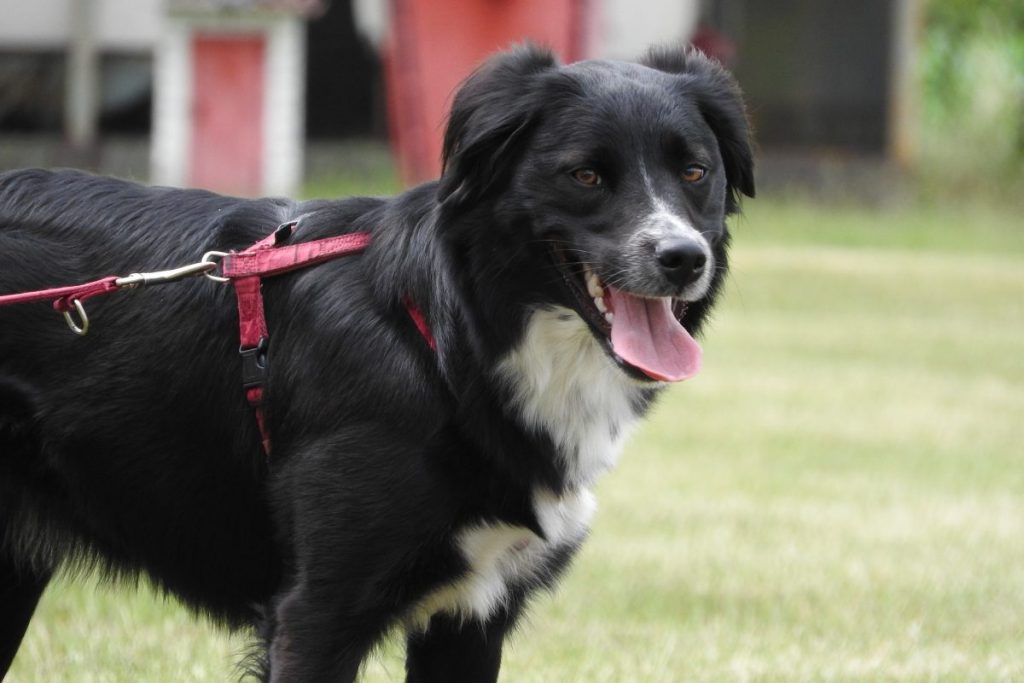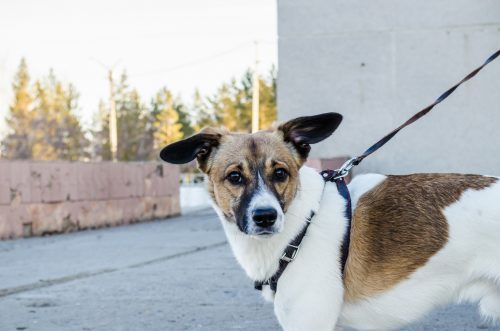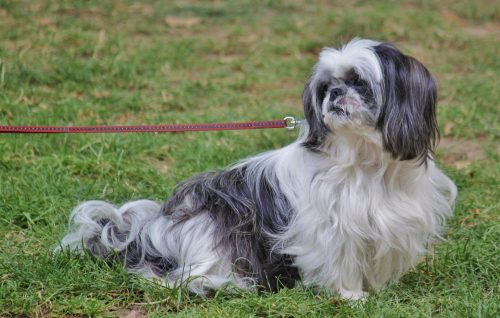From a dog’s perspective, humans walk really slow – in fact, humans may seem downright boring to dogs. However, struggling with an overly-enthusiastic pooch during your walks can be not only stressful, but dangerous for you and your pet. Whether your dog accidentally breaks free or tugs you too hard, causing strain or even pulling you down with him, poor leash behavior can result in a multitude of problems.
According to dog trainers and experts, keeping your dog from pulling on his leash is one of the most common problems that dog owners are faced with. Instilling appropriate leash manners at an early age minimizes risks to you and your pet, while making the time spent together not only safer, but more pleasant and comfortable for everyone involved.
With appropriate training techniques and leash management, you can learn how to better acclimate your four-legged friend and turn your tug-of-war walks to a stroll in the park.
The Benefits of Proper Leash Training
It probably goes without saying that walking is essential to your pup’s well-being – in addition to improving his social skills, walks provide mental and physical stimulation essential for his development, especially in his formative years. It’s also a great opportunity to bond with your dog while he explores the world around him.
Experts agree that leash-walking in the beginning phases should be looked at as a training session. Whether you’re practicing the basic commands such as ‘sit’, ‘down’ and ‘stay’ or reinforcing the ways of loose leash walking, these sessions should be short and fun.
There’s no sense in taking your unskilled dog on a long, arduous walk at the onset of your training, as you’ll both be tempted to give up. This article will explore various methods to curb your pooch’s habits, while taking a closer look at why he behaves the way he does.
Fact vs. Fiction: My Dog Is Trying to Be The Alpha
Although it may seem like your dog is trying to show you who’s boss, the truth of the matter is he’s more than a little excited (and having a hard time hiding it)! For some dogs, it’s a challenge to control their impulses, especially when stimulated in an outdoor environment with so many sights, sounds and smells.
Therefore, it’s natural for them to want to walk (or run) quickly – hence, the pulling on the leash. He’s not trying to be a pack leader or dominant over you – he just wants to explore. Humans walk at a much slower rate than a dog’s natural pace, so keep in mind that what may feel like aggression is more often than not rooted in curiosity.
Because dogs love to be outside, his urges to lunge or pull on his leash are strong – with so much stimuli, it’s really no wonder he’s rearing to go. Since your dog’s walk is likely the most exciting part of his day, it’s important to teach your canine companion how to walk on his leash properly without pain or discomfort, so that this daily outing is a positive experience for the two of you.
In other cases, your dog may feel threatened by another dog, a person or other place/thing – and if he’s on a leash, he may feel frustrated or trapped, since he can’t ‘get away’. Leash lunging or aggression are behaviors that are often the result of your furry friend feeling uncomfortable, anxious, or restrained when placed in a certain social situation.
In regular circumstances, an unleashed dog would have the ability to put sufficient space between himself and the cause of his fear. However, when he’s on a leash, he will react defensively (including lunging, barking, growling or other exacerbated behavior) in his desires to make the catalyst ‘go away’. Understanding your dog’s behavior is paramount in helping him overcome this reactive pattern.
Tips to Prevent Your Dog from Pulling On His Leash
Regardless of your beloved pooch’s age, size or lifestyle, basic leash skills are an essential part of training and owning a dog. You should be able to take your pup for a walk in the park, around the corner or into a public space without having your arm dislocated or finding your legs wrapped up in his leash.
Even the smallest pups have been known to pull, jerk, and yank at their leashes, taking the fun out of this everyday ritual. By providing him with adequate leash training, you will be ensuring both his safety and yours, as well as the people around you.
A properly leash-trained dog will walk steadily to one side or in front of you, with a slack leash and minimal tugging. Although the process may be time-consuming and somewhat challenging at first, the rewards will pay off in the long run, as your pet will be a pleasure to walk and spend time with.
If you happen to be a pet parent whose pup or adult dog has never been adequately leash-trained, it’s important to start off with short, positive walking sessions. Most experts agree that dogs should be taught to walk on the handler’s left side; however, if you don’t plan to compete in shows and/or prefer to have your dog on your right, that’s up to you. In any case, it’s beneficial to train your dog to stay on one side to avoid tripping when he moves back and forth during your walks.
For dog owners who have difficulty walking a boisterous dog – for example, you feel overpowered or as though you may be pulled over – there are a number of humane solutions and types of dog walking equipment to assist in behavioral modification while you teach your dog proper walking and leash etiquette.
Leash Pulling 101: Curb His Enthusiasm
Your dog is only as successful at pulling as you’ll allow him to be – in other words, it’s all in how you react to his behavior, as well as the examples you set. Break the cycle by changing the consequences and reinforcing good behavior, outlined in these helpful dog-walking tips:
Getting Started Checklist: Be sure to have all of the necessary equipment in place before you begin leash training – first, make sure your dog has a collar that fits him adequately, as well as a suitable leash for his breed and size. If you’re unsure, ask your veterinarian, dog breeder, or a certified dog trainer for additional info; most pet stores can also guide you in finding the appropriate collars, leashes and harnesses. In addition, be sure to have a tasty doggy treat or other kind of reward for your dog, as well as a clicker (if you use one) to mark positive behavior; an enthusiastic “yes!” or “good dog!” can work in the same way to emphasize good conduct.
Chest-Led Harness: This item is excellent for training your dog, as it alleviates the pressure when your dog starts yanking on his leash – by distributing the pressure in a more even fashion around his body, it takes the strain off of his neck that can occur with traditional collars.
When your dog pulls, the chest-led harness has a ring attached to leash, which will turn his body around rather than allow him to go forward. Many experts recommend this type of harness, as it will protect the safety of both you and your beloved dog.
Standing Still: Problem: your dog is ‘successful’ in the battle of the leash pulling contest, because by pulling you where he wants to go, you’re unintentionally reinforcing his behavior. Solution: The next time your dog pulls, stop moving forward immediately and stand totally still until the leash relaxes (either by turning around to give you focus or by your dog taking a step back). Once the leash is completely slack, reward him with a treat and continue on your walk, repeating as often as needed.
Reversing Direction: For those looking to expedite the process, try the ‘reverse direction’ method: when your pup pulls, turn away and walk off in the opposite direction, giving him a “let’s go” signal – without jerking on his leash. Use an excited, upbeat vocal inflection to get his attention and encourage him to follow without yanking or coercion.
Once he’s following you and the leash is relaxed, resume your walk – it may take a few times to set a precedent, but your tone of voice and body language will let him know that pulling and yanking will not be reinforced despite his efforts. In due time, your dog will learn that walking calmly by your side or in front of you on a loose leash will enable him to get where he wants to go.
Rewarding Good Behavior: One of the most tried and true methods of reinforcing good behavior is to offer his praise or even a small treat – when your dog follows your lead and walks close beside you, be sure to acknowledge him appropriately
Mixing It Up: Another proven training tactic is unpredictability – that is, varying your routine so that your dog is required to listen to you at all times during your walk. By being more attuned to your physical and verbal cues, he will not only pay closer attention to you, but it will also strengthen the bond between you and your pet. Always remember to praise him when he’s compliant during your walks, as this will reinforce his good behavior.
Teaching Impulse Control: As discussed earlier, your dog’s impulses are very strong, especially when he’s outdoors and aroused by different forms of stimuli. Unlike humans, most dogs lack impulse control, particularly when they’re young pups. Therefore, teaching your dog proper impulse control at an early age can make all the difference when it comes to your daily walks, as well as his general ability to socialize appropriately.
Exercising Before Walks: Contrary to popular belief, leash-walking your dog is not exercise, according to professional dog trainers. In fact, trying to train your dog to walk properly on a leash before he or she has had adequate physical activity is basically an exercise in futility.
The reason? Your dog has too much pent-up energy to focus on anything else – between his or her bounding energy, the exciting scents, and well, just being a dog, your pooch is simply too distracted to learn anything new.
So – what’s a dog-lover to do? Experts agree that the best course of action is to get in a suitable exercise regime before your daily walk – hit the local park, beach or backyard whenever possible to ensure your walks can focus on proper training techniques. A spirited game of fetch, frisbee or other physical activity will expend your dog’s energy so when you’re ready to go for a walk, he’ll be more complacent and able to focus on your commands.
Consulting The Pros: In certain instances, you may require the assistance of a professional dog trainer to provide obedience techniques and guidance. Because proper leash training is so important (especially for city-dwelling dogs and owners without yards), consulting an expert may be the best course of action to provide the necessary reinforcement of skills and ultimately the desired behavior from your dog.
Learning adequate techniques and behavioral methods from a pro can vastly benefit you and your pet – if you’re considering a certified dog trainer, go to CCPDT.org (Certified Council for Professional Dog Trainers) and do a search by area.
Summary: A Recap of Leash Training Your Dog
If your dog is already in the habit of pulling on his leash, your goal is to convince him of two things: pulling will not be tolerated, and walking politely will be rewarded. For those training a puppy or an adult dog who is submissive and responsive to your cues, experts suggest the ‘no forward progress’ approach to pulling as mentioned in the ‘Standing Still’ bullet above.
By teaching your dog that you will stop in your tracks if he pulls towards something, he will eventually understand that his efforts are ineffective. As a result, he will either turn and look at you, or stop pulling completely – in the event that the leash goes slack, be sure to reward your dog and continue your walk. If he pulls again, stop and repeat – it may take a few days for him to catch on, and short slow walks are recommended to reinstill this behavioral modification.
Over time, your dog will understand that pulling will slow down his progress rather than speed things up, and will come to understand your physical and verbal cues. By reassuring your dog, rewarding him for good behavior, and implementing appropriate dog-walking techniques, you can establish healthy boundaries and turn what was once a power struggle into an enjoyable routine that will last a lifetime.







